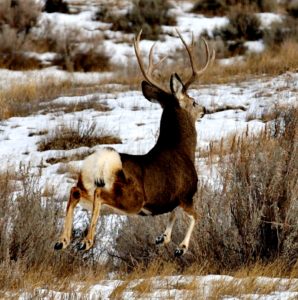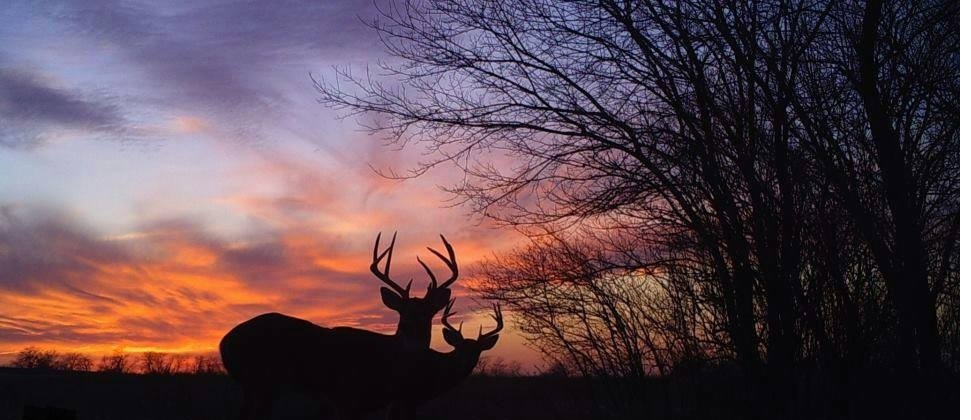Stalking whitetails is difficult, yet possible. A few years back I couldn’t get to my hunting are until noon. The early season day was warm and I doubted if deer would be moving, so I chose to stalk a knife edge in the Appalachian Mountains. With temperatures above 80 degrees and a light wind in my face, I climbed to the top of the ridge and began a meticulous stalk. The ridge top was flat so that I could cover 20 yards quietly and then peak over the edge, glassing likely bedding areas with binoculars.
 Suddenly, I spotted a bedded buck looking down the mountain 75 yards away. Easing back from the edge I slowly approached and inched over the top at 40 yards. Unlike hunting from a tree stand, I had time to calculate the shot, pick and exact aiming spot with my binoculars, shoot from a standing position and squeeze off the shot. Upon launch, the shaft caught the buck at the base of the neck and it literally rolled over and died. The animal was just a 1.5-year-old 4-point, but a tasty specimen and a memorable stalking trophy.
Suddenly, I spotted a bedded buck looking down the mountain 75 yards away. Easing back from the edge I slowly approached and inched over the top at 40 yards. Unlike hunting from a tree stand, I had time to calculate the shot, pick and exact aiming spot with my binoculars, shoot from a standing position and squeeze off the shot. Upon launch, the shaft caught the buck at the base of the neck and it literally rolled over and died. The animal was just a 1.5-year-old 4-point, but a tasty specimen and a memorable stalking trophy.
Open Spaces-
Spot and stalk tactics for whitetails and mule deer with a rifle is a great challenge and works best for some folks who have difficulty sitting still. Instead of waiting for a deer to come to you, you can glass extensive areas, locate a deer, and make a stalk. This past season, I spotted a large mule deer, but couldn’t get a shot before it spooked. For the next two hours, I climbed and tried to ambush the buck again. As the sun dipped below the horizon, I knew i had only minutes of shooting light. Army-crawling got me to the edge of a bluff where I made a great shot… on the wrong deer. Instead of a big 4×4, I shot a 2×2, one of the pitfalls of spot and stalk.
This post from the Realtree website lists other tips and tactics for stalking deer. If it’s not your first choice of hunting methods, it makes on heck of a plan B.
https://www.realtree.com/all/articles/open-country-stalking









![The Best Deer Camp Chili [VIDEO] Deer Chili Ingredients, Tomatoes, Chili Spices](/wp-content/uploads/2015/10/Deer-Chili-Deer-Camp-Recipe-218x150.jpg)








![How to Call Elk Early in the Season [VIDEO]](/wp-content/uploads/2016/08/byers003-218x150.jpg)




![Idiots Disturb Hunter: How Would You Have Handled It? [VIDEO]](/wp-content/uploads/2015/10/DSC00110-e1474487693878-100x70.jpg)
![Albino Buck Shocked to Shed His Antlers [VIDEO]](/wp-content/uploads/2015/10/AlbinoDeer-100x70.jpg)